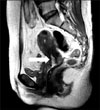1. Gharoro EP, Ikeanyi EN. An appraisal of the level of awareness and utilization of the Pap smear as a cervical cancer screening test among female health workers in a tertiary health institution. Int J Gynecol Cancer. 2006. 16:1063–1068.
2. IARC. Cervical cancer and screening. IARC handbook of cancer prevention. 2005. Vol. 10. Lyon: IARC Press.
3. Prendiville W, Cullimore J, Norman S. Large loop excision of the transformation zone (LLETZ). A new method of management for women with cervical intraepithelial neoplasia. Br J Obstet Gynaecol. 1989. 96:1054–1060.
4. Wright TC Jr, Cox JT, Massad LS, Twiggs LB, Wilkinson EJ. 2001 Consensus Guidelines for the Management of Women with Cervical Cytological Abnormalities. J Low Genit Tract Dis. 2002. 6:127–143.
5. Lee SJ, Kim WY, Lee JW, Kim HS, Choi YL, Ahn GH, et al. Conization using electrosurgical conization and cold coagulation for international federation of gynecology and obstetrics stage IA1 squamous cell carcinomas of the uterine cervix. Int J Gynecol Cancer. 2009. 19:407–411.
6. An international classification of retinopathy of prematurity. Pediatrics. 1984. 74:127–133.
7. Bell MJ, Ternberg JL, Feigin RD, Keating JP, Marshall R, Barton L, et al. Neonatal necrotizing enterocolitis. Therapeutic decisions based upon clinical staging. Ann Surg. 1978. 187:1–7.
8. Jones JM, Sweetnam P, Hibbard BM. The outcome of pregnancy after cone biopsy of the cervix: a case-control study. Br J Obstet Gynaecol. 1979. 86:913–916.
9. Kristensen GB. The outcome of pregnancy and preterm delivery after conization of the cervix. Arch Gynecol. 1985. 236:127–130.
10. Gronroos M, Liukko P, Kilkku P, Punnonen R. Pregnancy and delivery after conization of the cervix. Acta Obstet Gynecol Scand. 1979. 58:477–480.
11. van de Vijver A, Poppe W, Verguts J, Arbyn M. Pregnancy outcome after cervical conisation: a retrospective cohort study in the Leuven University Hospital. BJOG. 2010. 117:268–273.
12. Kyrgiou M, Koliopoulos G, Martin-Hirsch P, Arbyn M, Prendiville W, Paraskevaidis E. Obstetric outcomes after conservative treatment for intraepithelial or early invasive cervical lesions: systematic review and meta-analysis. Lancet. 2006. 367:489–498.
13. Albrechtsen S, Rasmussen S, Thoresen S, Irgens LM, Iversen OE. Pregnancy outcome in women before and after cervical conisation: population based cohort study. BMJ. 2008. 337:a1343.
14. Leiman G, Harrison NA, Rubin A. Pregnancy following conization of the cervix: complications related to cone size. Am J Obstet Gynecol. 1980. 136:14–18.
15. Ferenczy A, Choukroun D, Falcone T, Franco E. The effect of cervical loop electrosurgical excision on subsequent pregnancy outcome: North American experience. Am J Obstet Gynecol. 1995. 172:1246–1250.
16. Althuisius SM, Schornagel IJ, Dekker GA, van Geijn HP, Hummel P. Loop electrosurgical excision procedure of the cervix and time of delivery in subsequent pregnancy. Int J Gynaecol Obstet. 2001. 72:31–34.
17. Nohr B, Tabor A, Frederiksen K, Kjaer SK. Loop electrosurgical excision of the cervix and the subsequent risk of preterm delivery. Acta Obstet Gynecol Scand. 2007. 86:596–603.
18. Arbyn M, Kyrgiou M, Simoens C, Raifu AO, Koliopoulos G, Martin-Hirsch P, et al. Perinatal mortality and other severe adverse pregnancy outcomes associated with treatment of cervical intraepithelial neoplasia: meta-analysis. BMJ. 2008. 337:a1284.
19. Choi IJ, Kwak BG, Cha MS. Efficacy of loop conization with right-angled triangular shaped excisor in patients with cervical intraepithelial neoplasia 3. Korean J Gynecol Oncol. 2006. 17:222–226.
20. Nam SL, Park CJ, Kim KJ. Comparison of treatment of cervical lesion by use of cold knife conization, electric conizer or large loop. Korean J Gynecol Oncol. 2005. 16:133–140.
21. Kristensen J, Langhoff-Roos J, Kristensen FB. Increased risk of preterm birth in women with cervical conization. Obstet Gynecol. 1993. 81:1005–1008.
22. Robichaux AG 3rd, Stedman CM, Hamer C. Uterine activity in patients with cervical cerclage. Obstet Gynecol. 1990. 76:1 Suppl. 63S–66S.
23. Charles D, Edwards WR. Infectious complications of cervical cerclage. Am J Obstet Gynecol. 1981. 141:1065–1071.
24. Zeisler H, Joura EA, Bancher-Todesca D, Hanzal E, Gitsch G. Prophylactic cerclage in pregnancy. Effect in women with a history of conization. J Reprod Med. 1997. 42:390–392.
25. Simcox R, Seed PT, Bennett P, Teoh TG, Poston L, Shennan AH. A randomized controlled trial of cervical scanning vs history to determine cerclage in women at high risk of preterm birth (CIRCLE trial). Am J Obstet Gynecol. 2009. 200:623.e1–623.e6.
26. Drakeley AJ, Roberts D, Alfirevic Z. Cervical stitch (cerclage) for preventing pregnancy loss in women. Cochrane Database Syst Rev. 2003. (1):CD003253.









 PDF
PDF ePub
ePub Citation
Citation Print
Print


 XML Download
XML Download